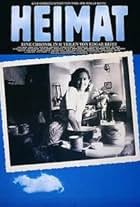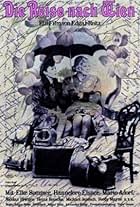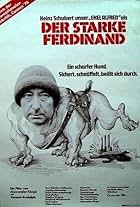Advanced search
- TITLES
- NAMES
- COLLABORATIONS
Search filters
Enter full date
to
or just enter yyyy, or yyyy-mm below
to
to
to
Exclude
Only includes titles with the selected topics
to
In minutes
to
1-36 of 36
- The village of Schabbach experiences the shifting fortunes of Germany from 1919 to 1982.
- Germany in Autumn has no typical plot; it mixes documentary footage with standard movie scenes to present the mood of Germany during the late 1970s. The film covers 2 months in 1977 when a businessman was kidnapped and murdered by the left-wing terrorists known as the RAF-Rote Armee Fraktion (Red Army Faction). The businessman was kidnapped in an effort to secure the release of the original leaders of the RAF, also known as the Baader-Meinhof gang. When the kidnapping effort and a plane hijacking effort failed, the three most prominent leaders of the RAF, Andreas Baader, Gudrun Ensslin, and Jan-Carl Raspe, all committed suicide in prison. It has become an article of faith within the left-wing community that these three were actually murdered by the state. The film has several vignettes, including an extended set of scenes with famous director Rainer Werner Fassbinder discussing his feelings about Germany's political situation at the time. Fassbinder's scenes almost seem to be candid documentary footage, but they aren't. Other scenes include documentary footage of the joint funeral of Baader, Enslin, and Raspe.
- Hermann Simon, an aspiring composer, comes of age in Munich during the troubled 1960s.
- Jakob longs for a new life for himself and his troubled family in Brazil.
- The village Schabbach experiences Germany's triumphs and tragedies from 1989 to 2000.
- Queen Charlotte commissions a portrait of her beloved philosopher Leibniz. As the sittings progress, they embark on a passionate quest to uncover the essence of art, love, and truth in painting.
- Leipzig area in 1945. The American occupying forces withdraw to the Elbe river, leaving the territory to the Russians.
- Albrecht Ludwig Berblinger dreams of flying. By chance he gets to know the airship designer Jakob Degen and sees his flying objects in action.
- The myth of Jason and the Argonauts in a different interpretation performed by children.
- During the closing months of the Second World War, two small-town German women discover some money in an attic and decide to spend it on a trip to Vienna.
- The clownish security chief of a West German business is obsessed with protecting his factory from fancied and real breaches, especially from groups such as The Red Army Faction. Ferdinand's paranoia and methods can't be contained by his company. The sympathetically-drawn Ferdinand's ludicrous actions recall those of the cynical, disastrous axis between fascism and big business in 1930's Europe: satire of the rise of private security.
- Elizabeth is a young woman who seeks happiness excessively burning out all those around her.
- "Das Kübelkind" is a figure of art: in every story society forces her to learn something. But she, grown up from the moment of her birth, always learns something more than was demanded of her without being asked.
- Homeland Fragments: The women.
- A goldsmith is so obsessed with his own craft that he murders his customers.
- The breath artist.
- In 1968 Munich, a high school classroom becomes a film studio directed by Edgar Reitz, chronicling the lives of teenage girls.
- While eavesdropping on the conversation of two women at the cemetery fourteen year old Benja learns of the old women who resides in the mysterious Villa. He decides to search for her. Upon finding her, there develops a friendship between the two. The seventy-one year old Johanna Haupt is the only occupant of this gigantic old Villa. The accident death of her husband Josef last year has sapped the last of Johanna's zest and desire to live. Her sole wish is to die and he left alone with her happy memories of the past. Mrs. Haupt notates all her daily functions to the last detail as if this (dairy) were the only thing which keeps her live. She attempts to catagorize all information from the media concerning the condition of the world's affairs according to her perception of their importance. Cut-outs of newspaper articles or notated facts on strips of paper are stuck to the walls of home. Making her home into a cave. It's 1990 - a year after the "Wende" - the Germany's Reunification. As the son of the former owner of the Villa appears to have the property appraised, he discovers Mrs. Haupt. She should move out so that the Villa can be renovated. Benja offers to help Mrs. Haupt and invites her to live with him. He has no idea that they've touched upon a secret which encircles them both. Benja makes an unbelievable discovery which fundamentally changes his life as well as Mrs. Haupt's.



















